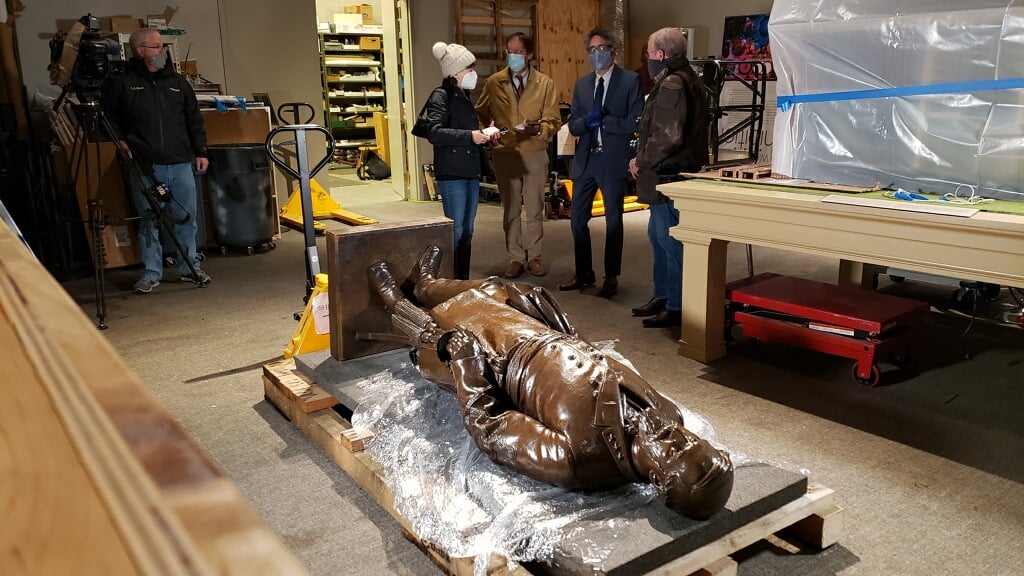
Earlier this week, a life-sized bronze statue of Confederate General Robert E. Lee was unceremoniously removed from the U.S. capitol more than a century after it was installed. But just as quickly as the question over the controversial sculpture’s fate was resolved, another one popped up: Where does it go now?
It’s a question haunting many monuments toppled in 2020. In this case, the simple answer is the Virginia Museum of History and Culture in Richmond, where it arrived Tuesday morning. More complicated, though, is what the museum, which is currently closed for renovation, will do with it.
“Since we first learned that the statue may come to the museum, we had always intended to display it,” Andrew Talkov, the museum’s senior director of curatorial affairs, tells Artnet News. “There was never a thought of simply putting it in storage and hiding or holding onto it simply for posterity.”
Virginia’s statue of Robert E. Lee in the U.S. Capitol. Photo: Jack Mayer, office of Governor Northam.
Indeed, when the museum reopens in the spring of 2022, one of the most divisive symbols in the ongoing debate over historical public statuary will be on full display, likely in a larger exhibition about the history and evolution of “Confederate memorialization, from a variety of viewpoints,” Talkov says.
But display does not equal endorsement, the curator is quick to clarify. “We’re not going to decide,” he says. “It’ll be our society that decides how they want to handle these types of monuments in the future.”
Though programming plans are in the early stages, the curator says he intends to present the statue in a balanced, historically-informed manner. It won’t be neutral, but it won’t be geared toward the polemical either.
The goal, he says, is to “connect our past with our present. It’s difficult to understand why the monument was removed if we don’t understand how the monument came to be in the first place,” he says.
Created in 1909 by Richmond sculptor Edward Virginius Valentine, the Lee statue stood for 111 years as one of two sculptures representing Virginia in the U.S. Capitol’s National Statuary Hall. Specifically, it was located in the building’s crypt, where 13 statues represent the original 13 colonies.
An eight-person commission established by Virginia Governor Ralph Northam to remove the statue selected the museum as its new permanent home. The formal request came in August and contained no stipulations about whether or not it should be displayed, or in. what manner.
The museum was a logical fit for the statue, in part because its building is itself a Confederate monument—or at least it used to be. The museum is housed in the Confederate Memorial Institute (colloquially known as the “Battle Abbey”), a structure built in 1921 as a memorial to the Confederate lives lost during the Civil War. The building was acquired in 1946 by the museum, then known as the Virginia Historical Society. Prior to that, the society was headquartered in the Lee House, a Richmond building that housed General Lee and his family during the war.
The Virginia Museum of History and Culture in Richmond. Courtesy of the VMHC.
When the Lee statue goes on display, there’s a good chance other symbols of 2020 will be included alongside it. Among the objects to enter into the museum’s collection this year are a used can of tear gas, a demonstrator’s broken face shield, and several protest signs and posters.
“I can’t imagine we would have a conversation about Confederate memory without talking about the events of the summer of 2020,” Talkov says.
“History museums are an excellent place to be able to look at where we are,” he continues, “and I think the statue is an incredible symbol of where we are as a society in regard to confederate memory and monumentation. That’s a conversation we want to welcome into the museum.”